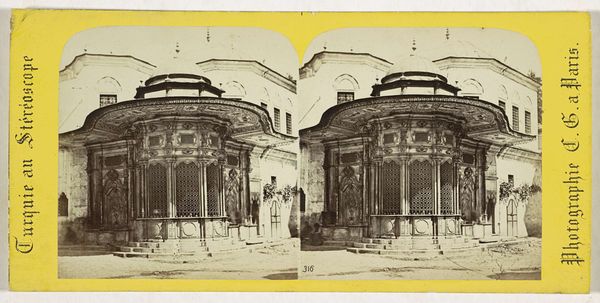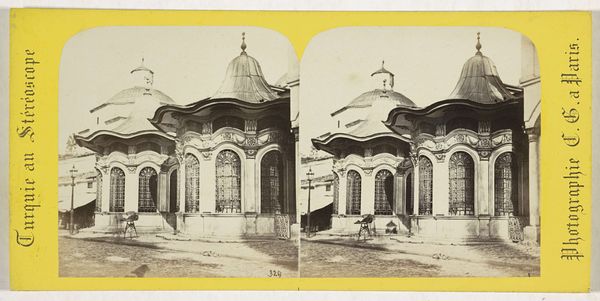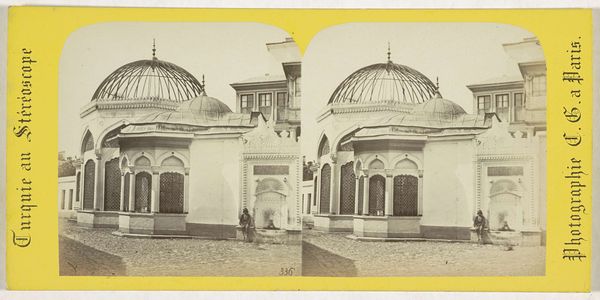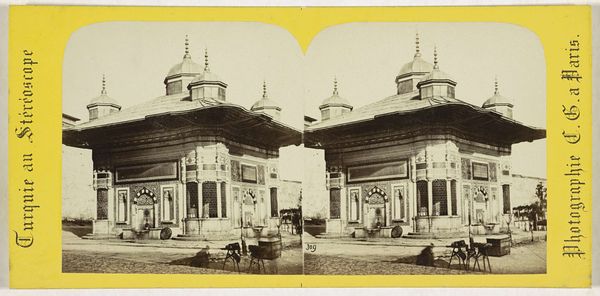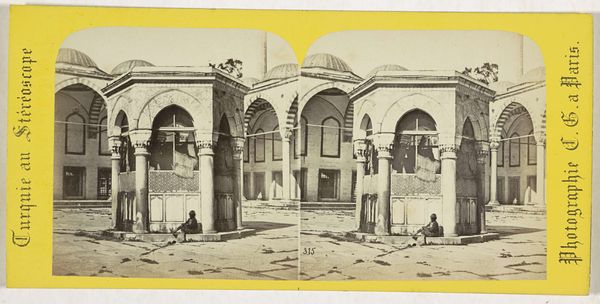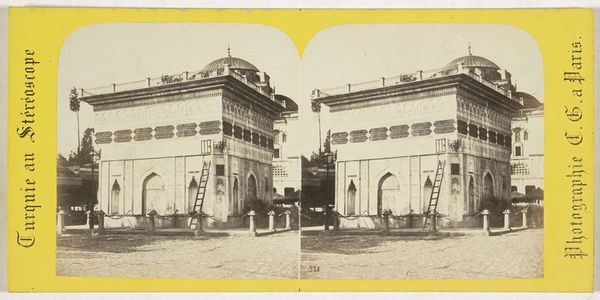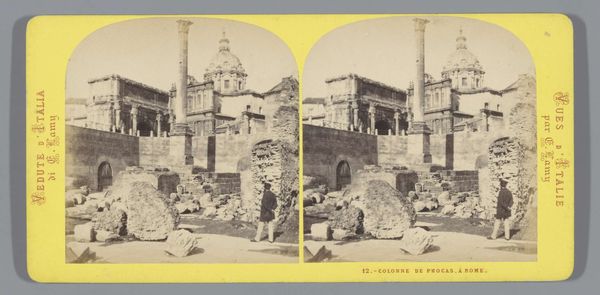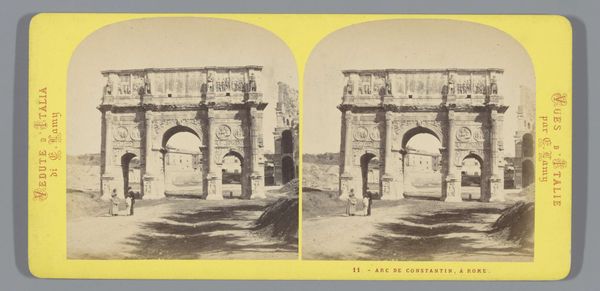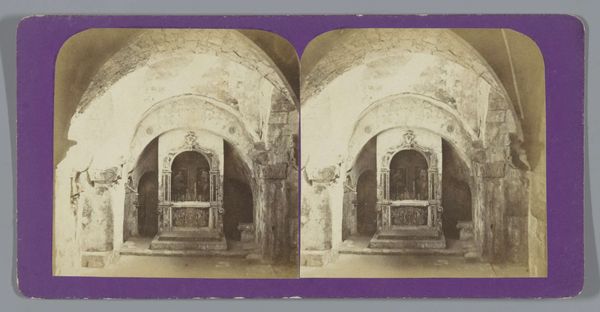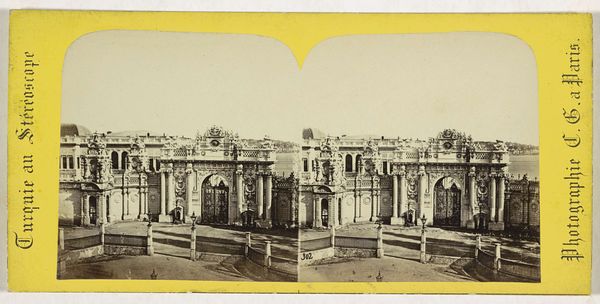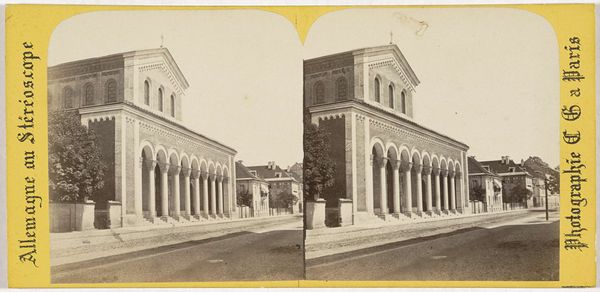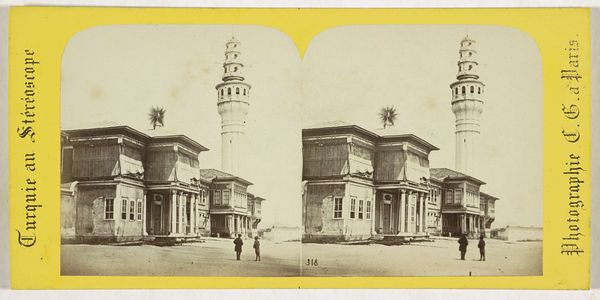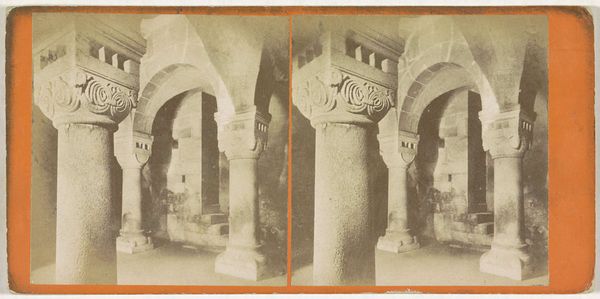
print, photography
# print
#
photography
#
cityscape
#
islamic-art
Dimensions: height 84 mm, width 174 mm
Copyright: Rijks Museum: Open Domain
Editor: Here we have a photograph, actually a stereo card, by Charles Gaudin titled "Gate of the Topkapi Palace, Istanbul" dated sometime between 1861 and 1870. The architecture has such presence in this scene. What strikes you about this piece? Curator: Well, first off, stereo cards like this were not just tourist trinkets. They participated in a larger project of constructing a Western gaze on the "Orient." Istanbul, as the former heart of the Ottoman Empire, carried immense political and cultural weight. Who gets to represent that and how becomes crucial. Notice the carefully framed architecture—almost like a stage set for Western consumption. How do you think the inclusion of local figures, like the guard, plays into this? Editor: That's interesting. I hadn't considered the staged aspect so much. I suppose the figures add a touch of "authenticity," reinforcing Western expectations of the East. Curator: Exactly! Think about Edward Said's concept of Orientalism. This photograph, with its framing and its subject, actively participates in creating an idea of the “Orient” as fundamentally different and perhaps even subordinate to the West. Even the choice to focus on a gate—a threshold—symbolically highlights the divide between "us" and "them." How does understanding this historical context change your initial impression of the architecture? Editor: It makes me question my first reaction, actually. Seeing it as just "beautiful architecture" now feels too simplistic, like ignoring the power dynamics embedded within the image. Curator: Precisely! Recognizing that power is the first step toward a more critical and engaged way of viewing art and its role in society. Editor: This really broadens my understanding, beyond just the aesthetic. I see how important it is to consider these social and political implications in art history. Curator: Absolutely. And that’s how art history can really speak to contemporary issues.
Comments
No comments
Be the first to comment and join the conversation on the ultimate creative platform.
